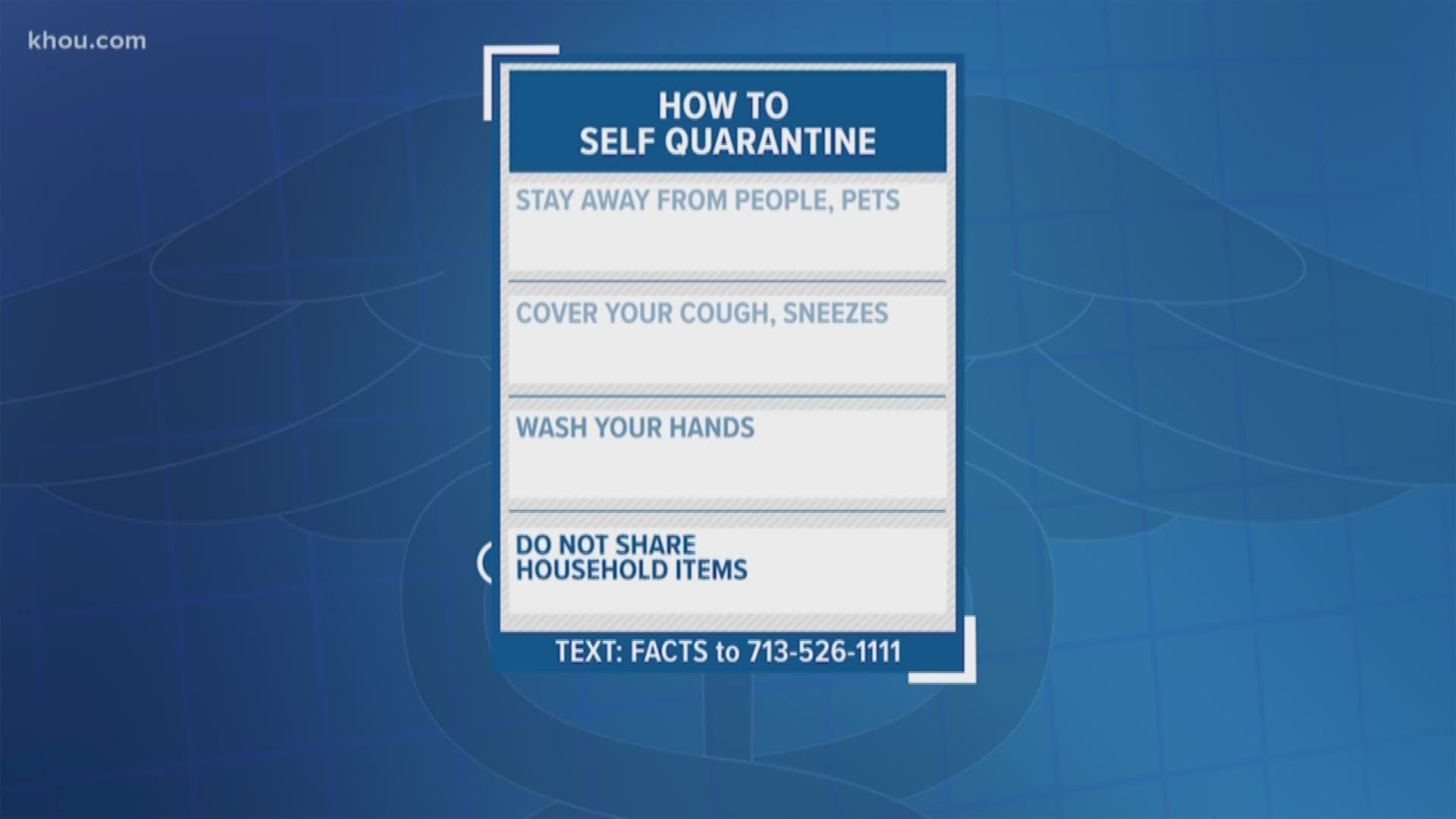HOUSTON — As coronavirus, or COVID-19, continues to dominate the headlines, it's important to stay informed and to resist spreading unconfirmed rumors.
Here's a quick guide on the common symptoms of coronavirus, how it spreads and what you can do to lower your risk of getting it.
Coronavirus symptoms
The symptoms of coronavirus are similar to the flu or a bad cold. Symptoms include a fever, cough and shortness of breath, according to the Centers for Disease Control.
Most healthy people will have mild symptoms. A study of more than 72,000 patients by the Centers for Disease Control in China showed 80-percent of the cases there were mild.
But infection can cause pneumonia, severe acute respiratory syndrome, kidney failure and even death, according to the World Health Organization. Older people with underlying health conditions are most at risk.
The CDC believes symptoms may appear anywhere from two to 14 days after being exposed.
SPECIAL COVERAGE: Stay up to date on coronavirus
How coronavirus is spread
Human coronaviruses are usually spread through:
- The air by coughing or sneezing
- Close personal contact, such as touching or shaking hands
- Touching an object or surface with the virus on it, then touching your mouth, nose or eyes before washing your hands.
Help stop the spread
- Stay home when you are sick.
- Eat and sleep separately from your family members
- Use different utensils and dishes
- Cover your cough or sneeze with your arm, hot your hand.
- If you use a tissue, throw it in the trash.
Lower your risk
- Wash your hands often with soap and water for at least 20 seconds. If soap and water are not available, use an alcohol-based hand sanitizer.
- Avoid touching your eyes, nose, and mouth with unwashed hands.
- Avoid close contact with people who are sick.
- Clean and disinfect frequently touched objects and surfaces.
- If you are 60 or over and have an underlying health condition such as cardiovascular disease, diabetes or respiratory illnesses like asthma or COPD, the World Health Organization advises you try to avoid crowds or or places where you might interact with people who are sick.
What is the difference between coronavirus and the flu or allergies?
Coronavirus symptoms include fever, cough, shortness of breath or difficulty breathing, and symptoms appear 2 to 14 days after exposure.
Flu symptoms include fever, cough, chills and sweats, congestion, sore throat, muscle aches, fatigue and weakness.
Allergy symptoms include sneezing, itchy nose, itchy eyes, itchy roof of the mouth, runny/stuffy nose and watery, red or swollen eyes.
Sources: Centers for Disease Control and World Health Organization

